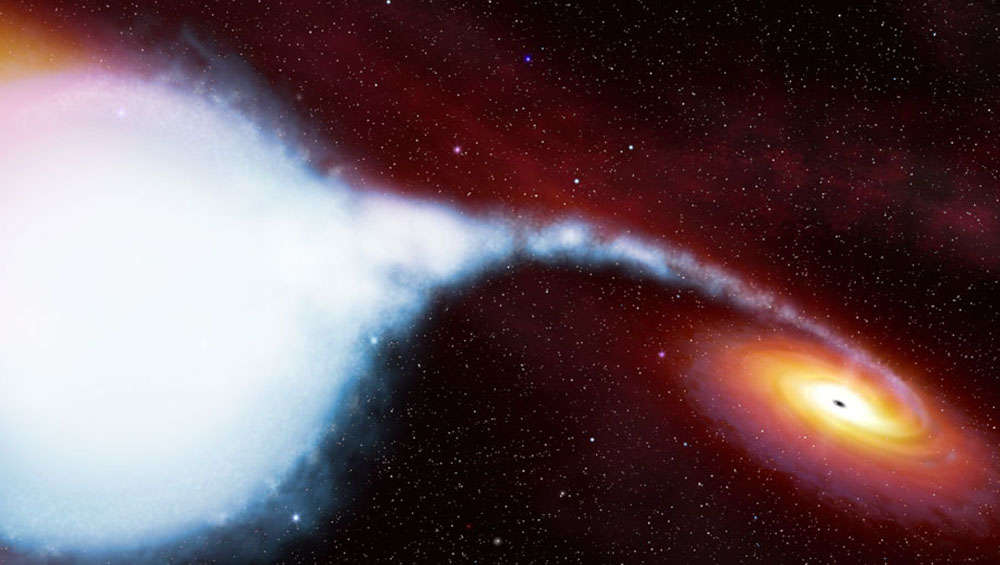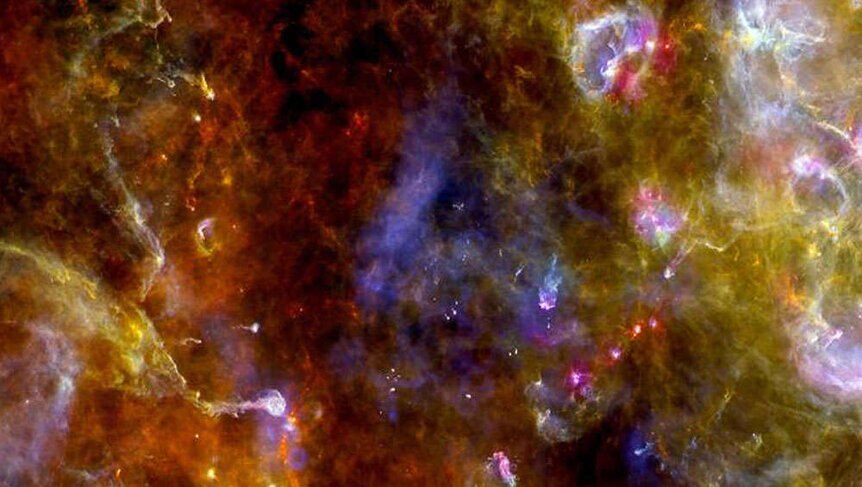Create a free profile to get unlimited access to exclusive videos, sweepstakes, and more!
Monstrous, superfast black hole can tell us how dead stars morph into such beasts

What happens when a black hole is way faster and more massive than anyone could have imagined?
The black hole in the Cygnus X-1 binary star system was the first black hole ever discovered. It has now been found to be the fastest in the universe, and 50% more massive than previously thought. What makes this monster really confusing is that really bright stars were thought to lose a significant amount of mass before their death and zombification as black holes. Finding out why it is so huge, but still spins like the devil, can help scientists rethink the evolution of massive stars that eventually meet their doom as black holes.
Astronomer James Miller-Jones of ICRAR (International Center for Radio Astronomy Research) at Curtin University realized that Cygnus X-1's black hole didn’t shed nearly as much as expected. It almost seems as if this beast is laughing evilly in the face of theories about black hole formation.
“It is the mass of the black hole that is most problematic,” Miller-Jones, who led a study recently published in Science, told SYFY WIRE. “Our current best theoretical models suggest that in the Milky Way environment, the mass lost by massive stars via their stellar winds over their few-million-year lifetimes should limit the mass of the black holes that they create to no more than about 15 times the mass of the Sun.”
Radiation is behind the stellar winds that sweep particles across hot stars and into space (which is how our electrical infrastructure periodically gets messed up by that radiation when a solar storm or coronal mass ejection happens). These winds can take much more stellar mass with them if there is high radiation pressure at really high energy levels, which explains why the brightest stars can also lose the most mass. So much luminosity means more energy is being burned. The loss of mass can even change how stars evolve. But wait.
Here is where it gets weird. If black holes are supposed to reach their ultimate mass when they get to be around 15 solar masses, then how could the one in Cygnus X-1 go above and beyond that? Steller winds are not exactly easy to measure, which only deepens the mystery. There might also be black holes out there that are even more massive but still formed in an environment similar to that of our galaxy, where there is a high concentration of heavy elements which are the remnants of star corpses.
“Since this black hole exists, there has to be a way for it to form,” Miller-Jones said. “We think that we need to recalibrate our models for how stars lose mass in winds, reducing the mass loss rates at particular phases of a star’s lifetime. We also need find more black holes in our Milky Way galaxy, to try to understand what the maximum black hole mass actually is, so that we can get a more accurate calibration of our models.”
Because Miller-Jones and his team were able to find out the approximate mass of the black hole and its distance from Earth, they could then get an idea of how devilishly fast it was spinning. As a black hole spins, it drags around spacetime, which also drags orbiting particles that become unstable. They end up getting pulled into the black hole’s gaseous accretion disc and orbiting closer and closer until they finally get past the event horizon — the point of no return. The faster the speed, the closer the particles, the more quickly they vanish into oblivion.
The further into the accretion disc you go, the hotter it gets. Enough heat makes it generate X-rays, whose brightness can give away the temperature. It is this temperature that tells astronomers the speed of a black hole. Turns out the black hole in Cygnus X-1 isn’t too bulky to spin just on the edge of the speed of light.
“With that temperature, then if we know the black hole distance and mass, which we measured in our study... we can figure out how close that X-ray emitting gas is to the black hole, and therefore how fast the black hole has to be spinning,” Miller-Jones said.
What is also strange about this black hole is that it was probably not formed in a supernova. It is thought to have been the demon spawn of a star remnant that collapsed directly into a black hole after winds blew away most of it mass. Because the mass of a black hole depends on the mass of the star it once was, its recalculated mass, speed, and distance can help scientists rethink the evolution of massive stars that eventually meet their doom as black holes.
That’s the thing about black holes. When you think one mystery is solved, it just spawns more and more and more.



























